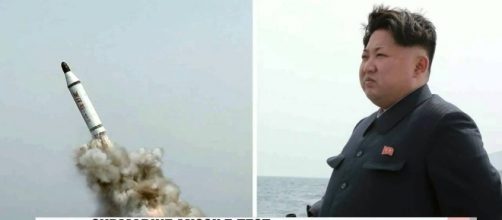After a week of slamming American media outlets, U.S. President Donald trump finally found a foreign enemy to hit on Twitter. His target on Tuesday was North Korean leader Kim Jong-un who claimed that Pyongyang successfully launched an intercontinental ballistic missile.
North Korea has just launched another missile. Does this guy have anything better to do with his life? Hard to believe that South Korea.....
— Donald J. Trump (@realDonaldTrump) July 4, 2017
Besides mocking the young dictator, Trump pressured China to end North Korea’s nonsense “once and for all,” Trump tweeted.
Before he became president, the billionaire looked down on Pyongyang’s claim that the communist country was in the final stages of developing a nuclear warhead that could reach mainland U.S., The Telegraph reported.
Longer flight
The New York Post reported that the ICBM launched by Pyongyang flew 40 minutes longer than previous launches. The missile, fired from North Korea’s western region, landed in waters near Japan. South Korean analysts, however, believe it is not an ICBM that Pyongyang launched, but it tested one of two intermediate-range missiles the country launched in early 2017.
The missile was launched from North Phyongan Province. It flew about 580 miles, according to the Joint Chiefs of Staff of South Korea.
The U.S. Pacific Command tracked a single, land-based intermediate range ballistic missile for 37 minutes. It landed in the Sea of Japan. The launch came one week after Trump and new South Korean President Moon Jae-in met in Washington to discuss opposing the development of atomic weapons by North Korea.
Like Trump, Japanese Prime Minister Shinzo Abe spoke against Pyongyang’s missile launch.
He said the latest launch showed that the threat from North Korea’s missile development is growing.
China calls for calm and restraint
In contrast, Geng Shuang, the spokesman of China’s Foreign Ministry, called nations to remain calm and exercise restraint after the missile test. He said China is opposed to North Korea going against the UN Security Council resolution rules on Pyongyang’s missile launches.
The missile reached an altitude of 2,802 kilometers. Jeffrey Lewis, an arms control specialist, pointed out that the missile went beyond 2,500 kilometers is an indicator it is an ICBM. An ICBM can hit Anchorage, but not San Francisco, Lewis tweeted. David Wright, co-director of the Global Security Program at the Union of Concerned Scientists, based in the U.S., said after they assessed the distance and flight time, the scientists believe the missile could have a reach of up to about 6,700 kilometers on a standard trajectory. It could reach all of Alaska, but not the lower 48 states or Hawaii, Wright said.


